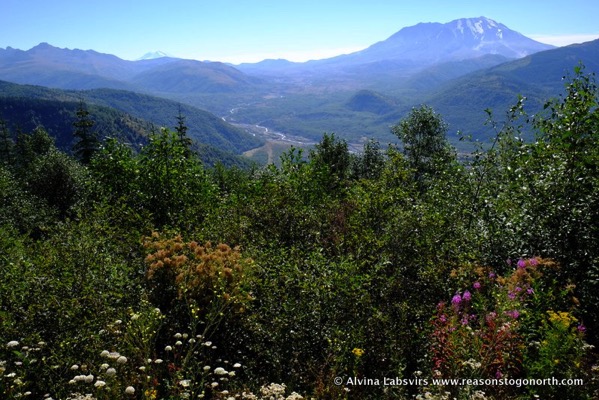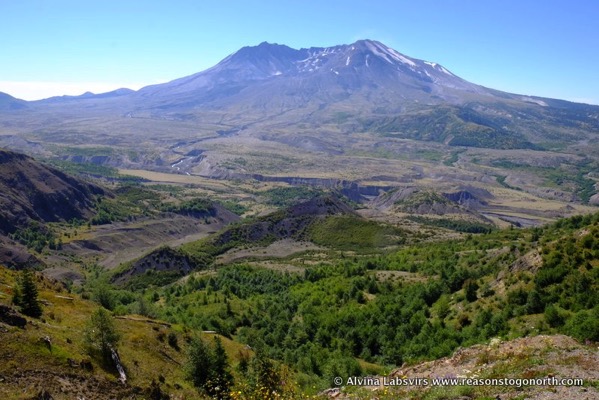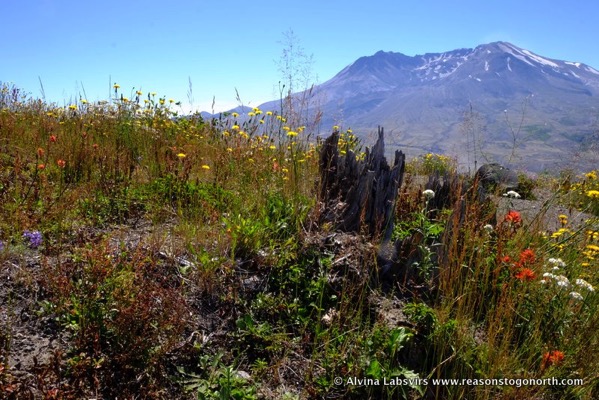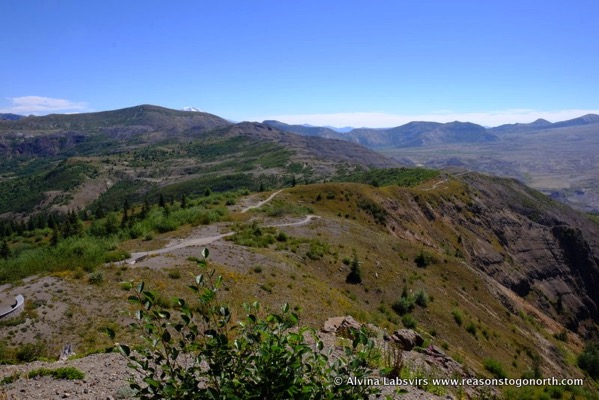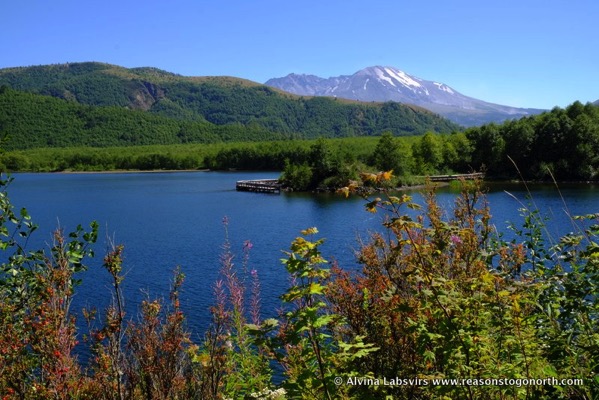Mount St Helens
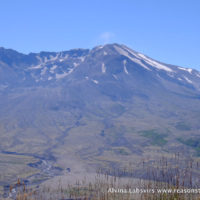
Mount St Helens blasted a hole in its side in 1980
Those of you old enough to remember it,
yes, it was that long ago,
One of those things that has you searching back in your memory,
wondering ,
what you were doing then?
My chance meeting with a couple whom I met down a cave in Vietnam last year, had already helped me part way up Mt Hood. Then they were kind enough to then take us over the Oregon border for a day trip to Mount St Helens.
The grey mountain looms ahead for several miles drive through what is now a designated and protected wilderness area. A broad valley left decimated by the sludge of ash. A precursor to the soon to be seen desolation.
Without passes and permits Johnson’s Ridge Observatory is the closest you’ll get to the mountain. Close enough to realise the power of the blast and the superiority of earth when it decides to wake up.
Rangers at the ridge are animated and informative. There are enough visuals and tactile displays to keep even four year old twins amused.
The ridge sits where the closest scientist to the mountain was on the day in 1980. He managed to make the call to say it was exploding but no more was heard and he was never found.
Fascinating pictures and stories of survivors, of those on mountains around, are told through many medium and add to the drama of the view.
Grey comes in an amazing array of shades. Its folds barely touched by regrowth of vegetation.
A faint plume WA fts in the summer sun. A reminder that St Helens is merely resting. It erupted again in 2004.
Ironically there is a glacier which is growing rather than receding. I can’t remember the science, but its all on the net.
Much was learned by me that day and much more has been learned by scientist since and because of 1980. The main message I took away was just because the largest blast or the biggest wave was x, y or z, it doesn’t mean this won’t be surpassed next time.

